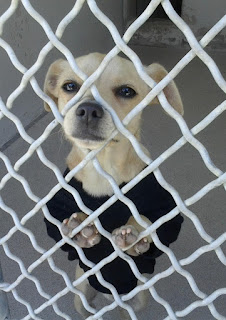Unbelievable coincidental anniversary for this "on the 8's"post today!
Exactly 1 year ago today, February 28, 2017, I began Darzalex IV infusions.
Rather than recap my first Darzalex infusion story on this post, here's my post from Feb 28.17 and Mar 1.17 . For those of you that are not familiar with Darzalex- Daratumumab, it is an IV infusion spread over 2 days for the first initial infusion. This is done to prevent and avoid severe infusion reactions.
"DARZALEX® is a monoclonal antibody that works in several ways. One way this monoclonal antibody works is by attaching itself to multiple myeloma cells in your body and directly killing them, and/or allowing your immune system to destroy them.
I'm thrilled to report that I did quite well with my initial infusions, and have been ok this past year, thank you Darza, Pom, Dex :))
Here's what myeloma was doing to me before Darzalex, Pomalyst, Dex:
(Mid to late 2016 was when I became refractory to Kyprolis Dex)
And here's where I am a year later:
I'm still surprised that Darza, Pom, Dex is continuing to hold myeloma's power over me to a minimum. Since I became Refractory to Kyprolis Dex mid 2016, after just 10 months or so, I was not holding my breath that this triplet would outsmart myeloma for an entire year. I've been even more surprised how well I'm doing, since the "required protocol" is a reduction in dose of Darzalex from 8 weeks weekly, to 8 weeks bi-monthly, to monthly now. Yes, my IgA has jumped a bit, but nothing like what it did in 2013, 2014, 2015, 2016. We'll see what my next labs in March bring. So it's Happy 1 Year triplet cocktail success Anniversary to me!
********************
For those of you that follow my blog regularly, you know we lost our beloved big cuddly blonde Labrador doggie Pawsy to liver cancer at the beginning of the month. He left such a hole in our hearts, our life, the doggies, and our ranch is just not the same without him here. He was such a gentle loving soul, and just so irreplaceable... Not that I try to "replace" our critters when they pass, but we have always had a buddy system here. I just believe that animals are happier when they have a buddy of their own kind. I am a committed believer in Rescue, and always look to save a life, when one of ours passes on. Although we have 2 little doggies for company for our big doggie, we just have always had 2 Bigs outside. As a result I have relentlessly looked for a new Big for Abbie... to no avail. Sadly so many dogs have serious "behavioral issues", and with my and my husband's health issues now, I just can't take on the responsibility of rehabbing a big dog with issues, as I have in the past.
So in the process of looking for a Big... look who I found...
or should I say... look who found us!
We've visited several Shelters over the last several weeks, looking at many Big doggies. So many need homes. So many sad cases and sad faces. So incredibly heart wrenching! But while looking for a a Big, look at this Little that found me. That Face! Those Eyes! I wasn't going to give in, as we don't "need" another Little, but how could I resist this face, saying "Pleeeeeese don't leave me here"....
Although we lost a precious life this month, we saved a life that needed us.
I hope your February was good to you, and March brings happiness, health and smiles to your life.
with someone or something as often as you can!









Hi Julie!
ReplyDeleteI sent you an email about a week ago, I trust I have the right email address, missy.myeloma9@gmail.com??
Hope to hear from you soon!
Una
Hi Una! Perfect timing :)) I was so happy to see your email with your beautiful pictures of you and Mom and your pets! Our new little rescue Jack is taking a lot of our time lol! He's so active, so I have to keep an eye on him all the time during his potty training, etc. He's hilarious how he's so happy and has "no boundaries", and just wants to be "on" us all the time. Rescues are the best :))
DeleteYes, I replied to you, even before I saw this sweet comment. Thank you for being such a loyal blog follower friend xoxo
Hi Julie!
DeleteOh no! I didn't get your response back!
I will double check but I haven't seen anything!
Una
So glad to be in contact with you Una xoxo
Delete